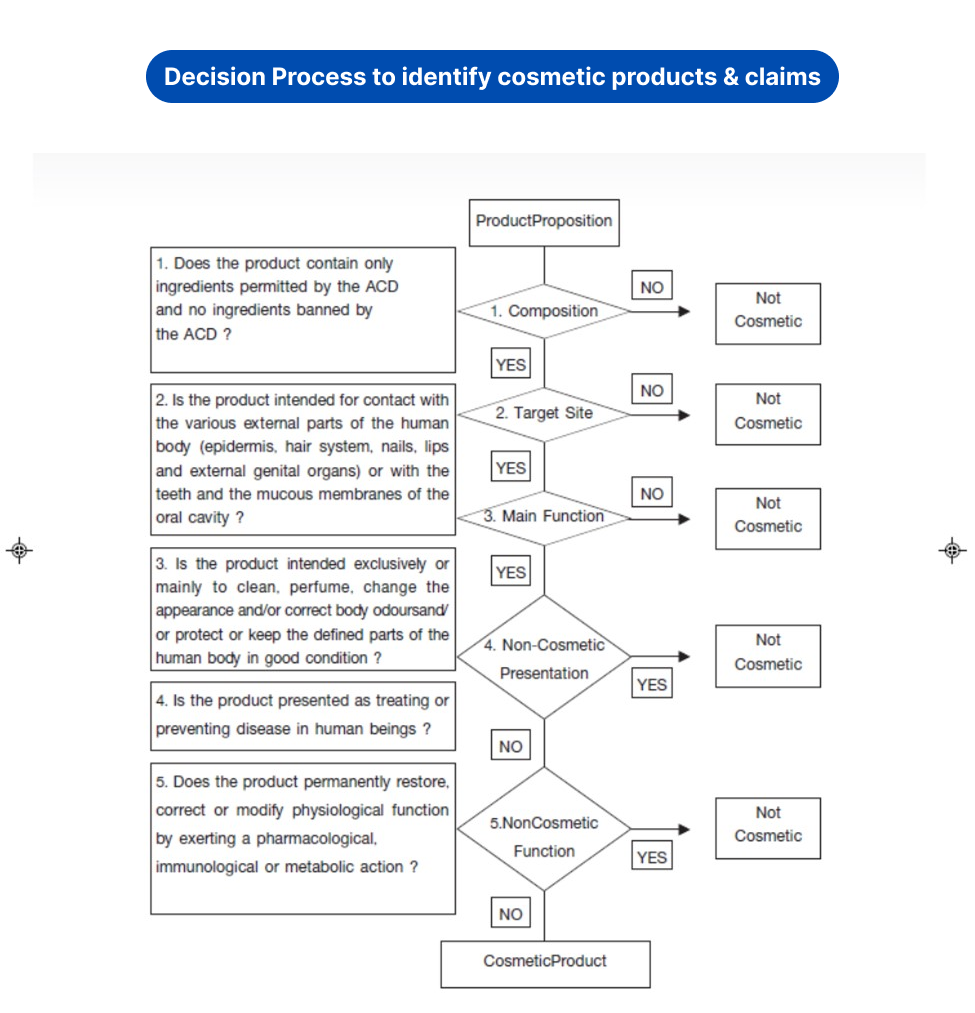Our Services
What is Cosmetic?
A product that is considered a cosmetic must satisfy the definition under section 4 of the Cosmetics Act, B.E. 2558 (2015) which provide that a cosmetic means:
- An article intended to be used by applying to, rubbing on, massaging into, sprinkling on, spraying on, dropping on, putting on, perfuming or any other means with external parts of human body, including applying to teeth and mucous membranes in the oral cavity, for the purpose of cleaning, beautifying or changing their appearance, or preventing body odors, or protecting or maintaining the parts in good condition, including skincare products, but excluding ornaments and accessories used outside the body.
- An article intended to be used specifically as ingredients in the manufacture of cosmetics.
- Any other article prescribed to be a cosmetic by the Ministerial Regulation.
Examples of products that fall within the definition of cosmetics are face cream, body lotion, soap, shampoo, hair conditioner, toothpaste, mouthwash, lipstick, blush, eyeshadow, eyeliner, nail paint, face powder, talcum powder, refreshing towel/tissue, sanitary napkin, hair dye product, hair curling product, hair removal product, hair bleaching product, teeth whitening product, deodorant, and perfume. The details of the product must not be contrary to the requirements and regulations issued under the Cosmetics Act, B.E. 2558 (2015).
Documents concerning cosmetics that can be used as reference when considering the use of substances as ingredients in a cosmetic product are:
- CTFA documents (International Cosmetic Ingredient Dictionary and Handbook);
- COSING database;
- Academic documents published in a credible academic journal that has been approved by the Cosmetic Pre-market Regulation Working Group.

